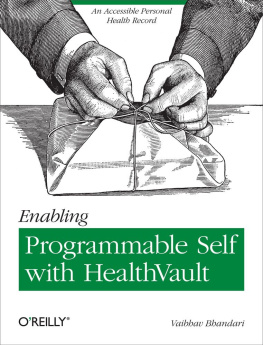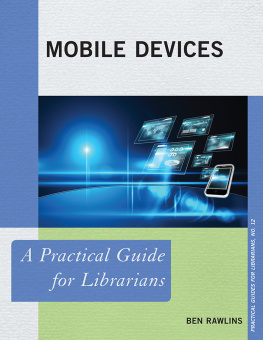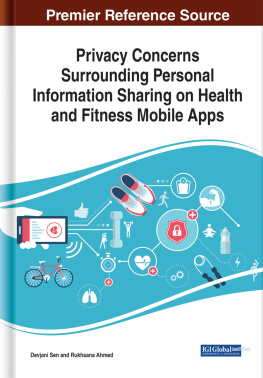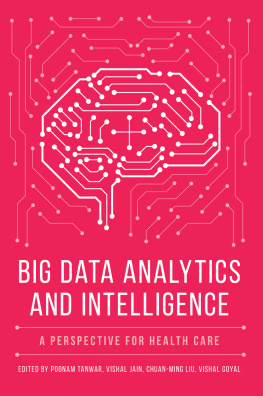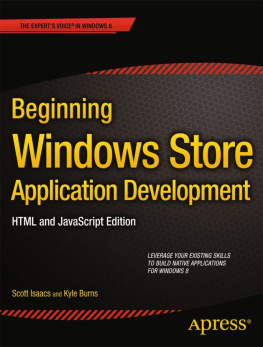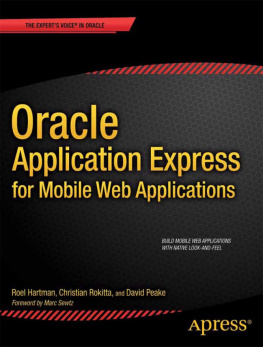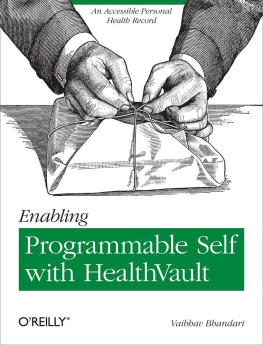Supplemental files and examples for this book can be found at http://examples.oreilly.com/0636920022930/. Please use a standard desktop web browser to access these files, as they may not be accessible from all ereader devices.
All code files or examples referenced in the book will be available online. For physical books that ship with an accompanying disc, whenever possible, weve posted all CD/DVD content. Note that while we provide as much of the media content as we are able via free download, we are sometimes limited by licensing restrictions. Please direct any questions or concerns to .
Foreword
Sean Nolan, Distinguished Engineer, Microsoft Health Solutions
Back in the spring of 2006, I was getting headaches consistently around lunchtime every Saturday. It was really weird. At first I didnt recognize the pattern, I just knew that my head hurt a lot, and I tried to make it go away by popping ibuprofen. The pills kind of worked, but not really. After way too long, I finally realized what must be going on.
One of the classic things everybody knows about Microsoft is that they give employees free soda. Its a pretty cool perk, but for those of us with no moderation switch, it can get a bit out of hand. When I came back to Microsoft in 2006 to start the HealthVault team, I quickly ran up a Diet Coke habit in the range of sixteen each day. All weekuntil Saturday, because the fridge in my house doesnt magically regenerate Diet Coke.
Suddenly it was just blindingly obvious: I was suffering from caffeine withdrawal. Now, a better man than I would have recognized that all that soda probably wasnt a good idea anyway. But instead, I just switched to caffeine-free Diet Coke and the headaches disappeared. I still spend a lot of time running to the restroom, but thats another issue altogether!
I love this story because its so simple and obviousand yet it offers up a clear path to making improvements in all aspects of clinical care:
Doctors measure a lot of stuff to try to understand problems in the human body: labs, imagery, vital signs, and more. But these are all done as isolated snapshots, and all too often patterns that occur over time (weeks, months, years) and space (at home, at work, traveling, etc.) hide away undiscovered.
Historically this was understandable, because measuring the body has been hard and often inconvenient. In order to be useful, the amount and diversity of data required can be significant. But the world has changed, and now its easy for anybody to create a holistic picture of their health with data.
This is one of the big reasons we created HealthVault. We recognized the importance of a comprehensive hub where people could collect all of this diverse information together, and where smart people could provide analysis tools to look for patterns and trends. For us, the quantified self has been a target from day one.
Vaibhav has been part of the HealthVault team for a long time, working with partners and our internal team to constantly improve the service. Hes really done a great job in this book of showing whats possible when you take a platform like HealthVault, combine it with an ecosystem of innovative measurement devices, and make the data available for analysis in familiar tools like Microsoft Excel. And thats not allhe walks us through building HealthVault apps for the web and mobile phones, somehow cramming a ton of great information into a pretty manageable read. I hope hell inspire an avalanche of new body hackers who can help show us whats possible.
Its pretty amazing stuffand frankly weve just gotten started. So have fun!
Preface
Outline of the Work
Microsoft HealthVault is the most prominent example of a personally controlled health record. With its open API, flexibility, and connections with multiple health care providers, it gives people interested in monitoring their own health an unprecedented opportunity to do their own research on their own data. This concise book will explain what you can store in HealthVault, how to enable automatic updates from well-known fitness devices, and how to use programming libraries to create reports and investigate trends of interest to you. Programmable Self is a combination of Quantified Self and motivational hacks. Quantifying what you want to change about yourself and using motivational tools to ensure consistent change has been a proven recipe for successful behavioral change. It's a lot easier to start walking more if you have to tell your coworkers how many steps you walked yesterday!
Organization of This Book
Although the chapters cover different topics, they have been arranged so that the concepts and techniques in earlier chapters form a foundation for the others.
Health is critical to all of us. Health care and the infrastructure around it touch our lives and the lives of our loved ones. Many of us in pursuit of long-term health adopt goals ranging from controlling our weight to long-distance running. The health care industry is in an early stage of realizing the power of the digital world and the effectiveness of networks in helping drive change.
This chapter introduces HealthVault as a powerful tool for interacting with health data. It also provides a walkthrough of functionality available to the end user through HealthVault.
Data is a powerful tool for changing behavior. The act of simply tracking something changes ones perception of that activity. Summarizing the data over time provides a yardstick by which to measure, and the act of tracking activity over time uncovers patterns in behavior. The structured data in HealthVault provides such an opportunity. Moreover, the HealthVault ecosystem offers a variety of applications and devices to assist in this endeavor.
In this chapter we will explore how a consumer can use various devices to track critical health measures. We will also use common tools to explore the data stored by these devices into Microsoft HealthVault. Well capture and view some data, then use a PowerShell plug-in to extract selected data to a comma-separated values (CSV) format and manipulate the data in that format.

